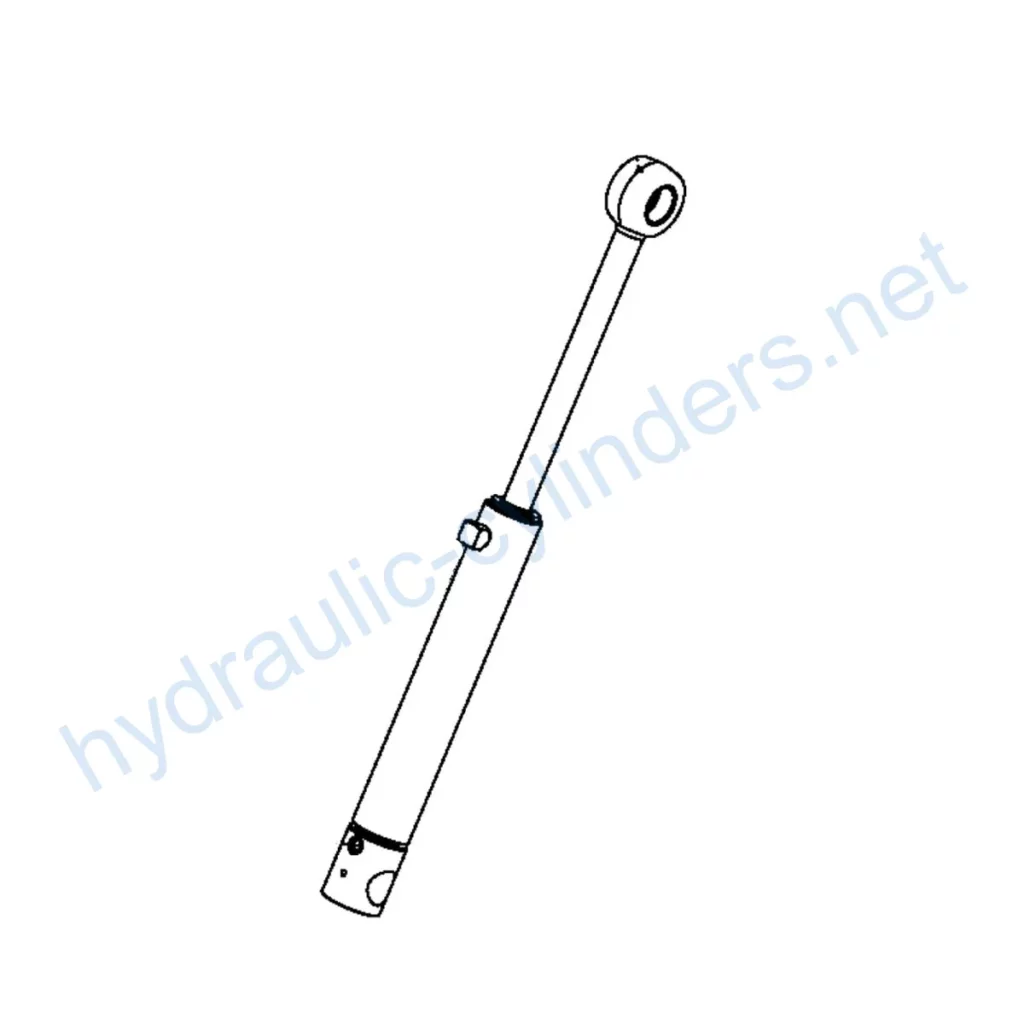Introduction
The Replacement Of AHC18213 Hydraulic Cylinder is a crucial component in various industrial equipment, offering reliable hydraulic power for optimal performance. This hydraulic cylinder is specifically designed for the 850J-II model, providing exceptional strength and durability.
Specifications
- Weight: 81.872 lb
- Height: 4.25 in
- Width: 6.4 in
- Length: 36 in
특징
- Improved Equipment Performance: Replacing damaged or worn hydraulic cylinders restores the equipment’s normal operational capability, ensuring optimal performance in various applications.
- Enhanced Safety: Regularly replacing hydraulic cylinders reduces safety hazards caused by cylinder failures, safeguarding both operators and equipment.
- Overload Protection: New cylinder designs often incorporate better overload protection mechanisms, enhancing safety during operation.
- Quick Installation: Modern hydraulic cylinders are designed for easy installation and replacement, minimizing downtime.
- Standardized Components: Many hydraulic cylinders are standardized products, facilitating the availability of replacement parts in the market.
We have the capability to produce this product and our cylinders are the perfect replacements for their counterparts. Our products are designed with precision and adhere to the highest quality standards in the industry.
Applications
- Excavators: Hydraulic cylinders on excavator arms or buckets may get damaged due to prolonged use or overload, requiring replacement to restore normal operation.
- Cranes: Hydraulic cylinders in crane jibs are prone to wear during frequent lifting and lowering, necessitating regular replacement for safety assurance.
- Tractors: Front-end loader hydraulic cylinders on tractors may experience leaks or performance deterioration during continuous lifting and tilting operations, demanding replacement.
- Harvesters: Hydraulic cylinders endure high pressure during harvesting, and fatigue can lead to damage, requiring timely replacement to maintain operational efficiency.
- Automated Production Lines: Hydraulic cylinders control robotic arms and other automated equipment. Cylinder failure can significantly impact production efficiency, necessitating immediate replacement.
- Die-Casting Machines: Hydraulic cylinders in die-casting machines may experience performance degradation due to high pressure and temperature. Regular replacement ensures product quality.
- Mining Equipment: Hydraulic cylinders in mining equipment are used for lifting and moving heavy loads. Regular inspection and replacement are necessary to avoid equipment failure in harsh working environments.
- Bulldozers: Hydraulic cylinder wear on the bulldozer’s dozer arm can result in decreased pushing capacity, prompting timely replacement to maintain operational efficiency.
Maintenance Tasks
Regular maintenance tasks for the Replacement Of AHC18213 Hydraulic Cylinder include:
- Periodic inspections: Regularly check for signs of leaks, damage, or wear on the cylinder body and seals.
- Proper lubrication: Ensure appropriate lubrication of the cylinder to reduce friction and extend its lifespan.
- Seal replacement and calibration checks: Replace worn seals and perform calibration checks to maintain optimal performance.
During the installation process, it is vital to provide proper alignment guidance and recommend the use of suitable mounting brackets to secure the cylinder. We also offer inspection, repair, and replacement services, along with tips to enhance the longevity of your hydraulic cylinder.
Safety Considerations and Environmental Factors
When working with hydraulic cylinders, prioritizing safety measures is crucial to prevent accidents and ensure a safe working environment. Please follow all safety guidelines and adhere to the recommended procedures for handling and operating hydraulic cylinders.
Troubleshooting and Common Issues
Common issues and troubleshooting for the Replacement Of AHC18213 Hydraulic Cylinder are as follows:
- Leakage: Inspect the cylinder for any signs of leakage and check the seals for damage. Replace the faulty seals to resolve the issue.
- Poor performance: If the cylinder’s performance is compromised, check for any internal damage or worn components. Replacement or repair may be necessary to restore proper functionality.
- Inconsistent operation: In cases where the cylinder operates intermittently or inconsistently, inspect the hydraulic system for any blockages or malfunctioning components. Clearing the blockages or replacing faulty parts should resolve the issue.
These troubleshooting tips and solutions will help you effectively diagnose and resolve problems with your hydraulic cylinder. Additionally, we recommend implementing preventive measures to minimize potential problems.
Design Considerations and Selection Criteria
When selecting hydraulic cylinders, it is essential to consider the following design aspects:
- Load-bearing capacity: Ensure the hydraulic cylinder can handle the required load and operate safely.
- Sealing: Choose appropriate seals, such as piston seals and rod seals, made of durable materials like polyurethane or nitrile rubber to ensure optimal performance and longevity.
- Durability: Opt for cylinders with finely treated cylinder bodies and threaded ends to enhance wear resistance and prolong service life.
- Safety: Prioritize cylinders with built-in safety features, such as overload protection mechanisms, to ensure safe operation.
- Maintainability: Consider cylinders that are easy to maintain, with readily available replacement parts and rebuild services.
Sealing and Lubrication
Proper sealing and lubrication are vital for the optimal performance and longevity of hydraulic cylinders. It is recommended to use various sealing components like piston seals, rod seals, and wipers. These seals should be made of wear-resistant materials such as polyurethane or nitrile rubber. Additionally, the cylinder body and threaded ends should undergo meticulous surface treatment to enhance wear resistance. Regular lubrication with the appropriate amount of hydraulic oil is necessary to ensure smooth operation and reduce friction.
Regular Inspections and Preventive Maintenance
Regular inspection and preventive maintenance tasks for the Replacement Of AHC18213 Hydraulic Cylinder include:
- Periodic inspections: Regularly inspect the cylinder for any signs of leaks, damage, or wear. Address any issues promptly.
- Proper lubrication: Follow the manufacturer’s recommendations for lubrication intervals and use the appropriate lubricant to reduce friction and extend the cylinder’s lifespan.
- Seal replacement and calibration checks: Replace worn seals and perform calibration checks to maintain optimal performance. Properly aligned and calibrated cylinders ensure smooth operation.
Installation Guide
Please note: Before installing the Replacement Of AHC18213 Hydraulic Cylinder, review the manufacturer’s instructions and guidelines for specific installation requirements.
- Ensure the hydraulic

